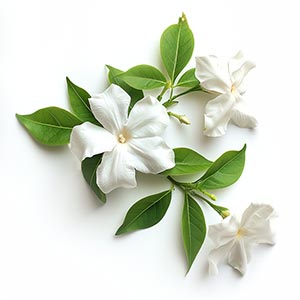Indian Jasmine, prominently used in perfumery, is renowned for its intensely fragrant, sweet, and floral aroma. It plays a pivotal role in adding depth and complexity to fragrances. Historically, Jasmine has been a symbol of elegance and allure in various cultures, with its use in perfumes dating back centuries. In fragrances, Indian Jasmine imparts a rich, opulent character, often serving as the heart or base note in sophisticated compositions. It harmoniously blends with a range of other notes, enhancing the overall sensory experience. Indian Jasmine is celebrated for its longevity and intensity in fragrances. It brings a distinctive floral sweetness that is both warm and inviting, making it a favored ingredient in many iconic scents.
Natural or Synthetic?
Indian Jasmine is utilized in both natural and synthetic forms due to various factors. The natural form, obtained through extraction processes like enfleurage and steam distillation, is highly valued for its authenticity and depth. However, extracting Jasmine oil is a labor-intensive and costly process, requiring a large volume of flowers to produce a small amount of oil. Synthetic versions are employed to overcome these challenges. They provide a cost-effective and consistent alternative, although they may lack some of the complexity of the natural oil. In the synthesis process, compounds like benzyl acetate, linalool, and jasmine lactone mimic the scent of natural jasmine.
Fragrance Families Indian Jasmine Most Commonly Found In
Show fragrances that contain Indian Jasmine as a note



